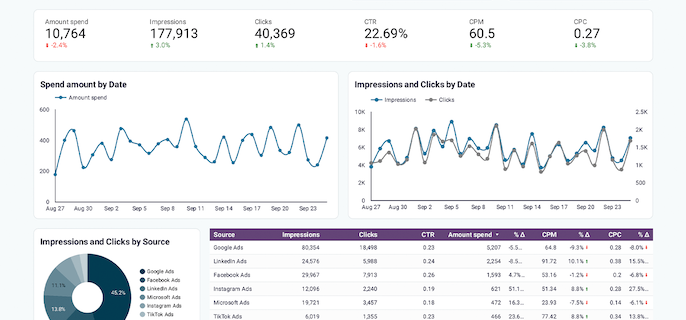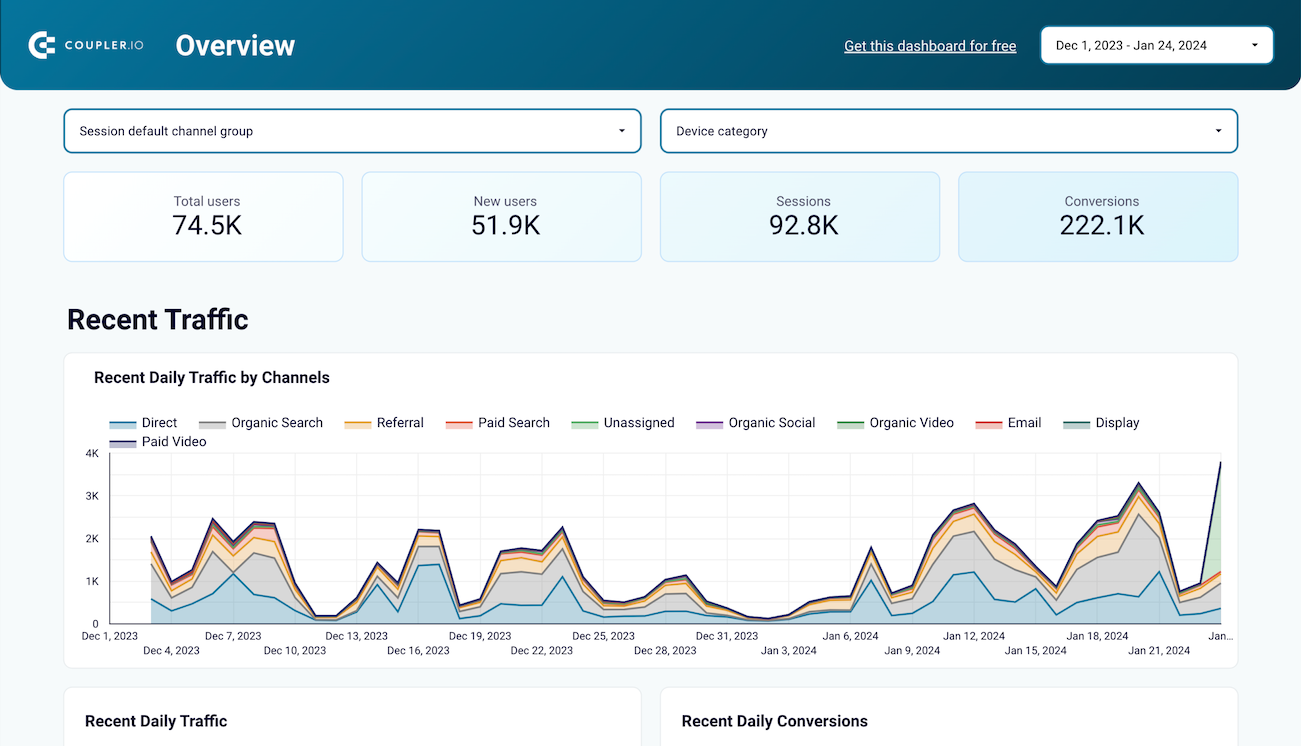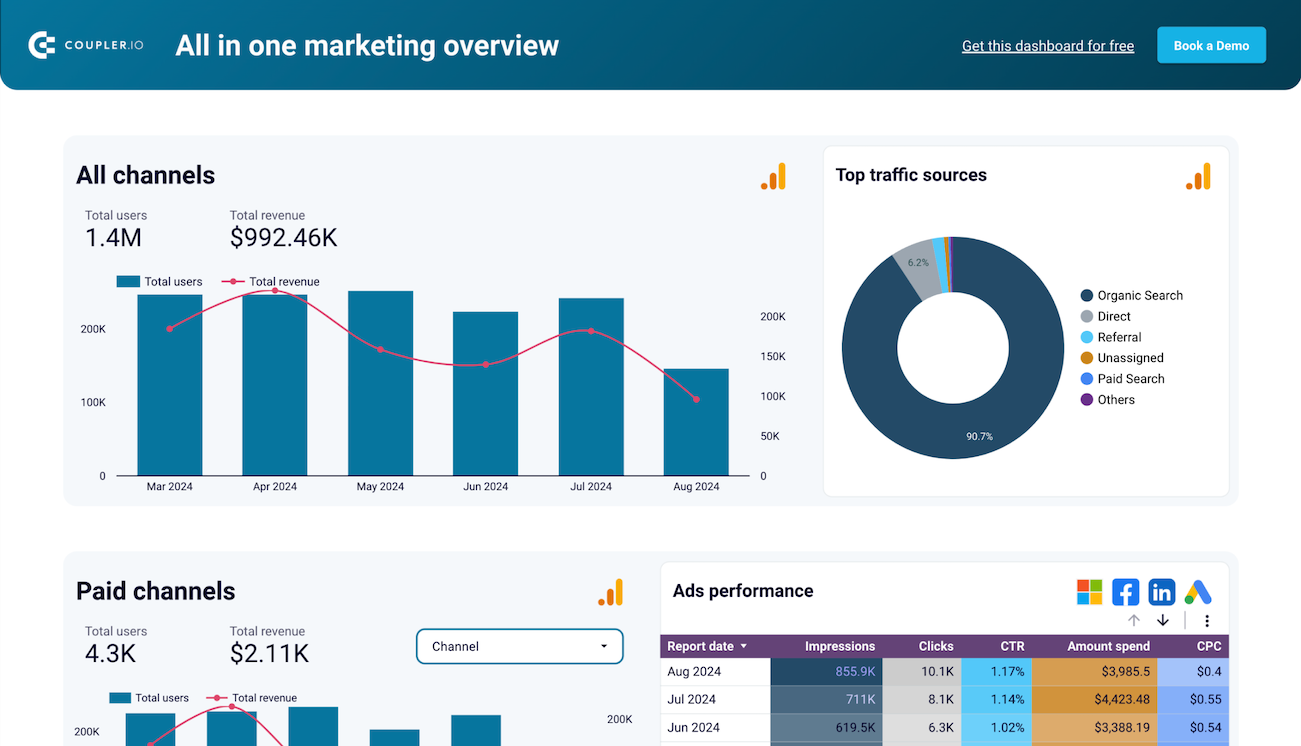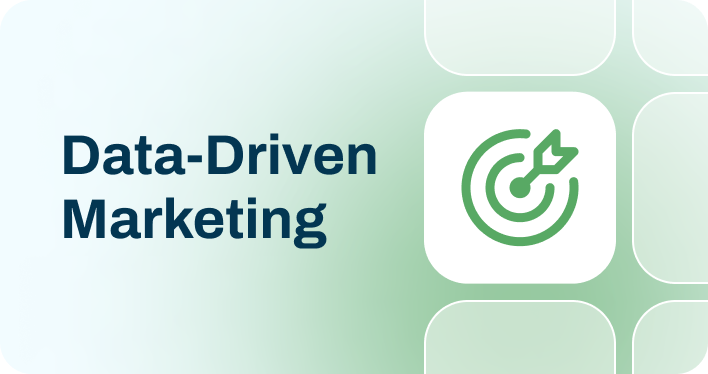What is an Engagement Rate?
Engagement rate measures users' interaction with content, indicating audience interest and involvement. It's crucial as it determines content effectiveness and audience connection, influencing brand visibility and loyalty. Analyzing the engagement rate helps understand which content resonates best with their audience, guiding content strategy refinement. Optimization involves creating compelling, relevant content tailored to target audiences, encouraging likes, shares, comments, and other interactions. You can enhance brand awareness, strengthen customer relationships, and drive desired actions by improving the engagement rate, ultimately maximizing marketing ROI.
How to calculate Engagement Rate?
Calculate the engagement rate by dividing the total number of engagements (likes, shares, comments, etc.) on a piece of content by the total number of impressions or reach, then multiply by 100 to get the percentage.


Our key templates to track Engagement Rate

Get a comprehensive PPC reporting tool to track the performance of your campaigns launched at multiple advertising platforms.










Use the insights based on the data from GA4 to monitor your website traffic and discover which pages resonate most with your audience.




Monitor all your marketing channels with an all-in-one dashboard providing performance overviews of web analytics, ad campaigns, SEO, social media, and emails.













How to improve Engagement Rate?








